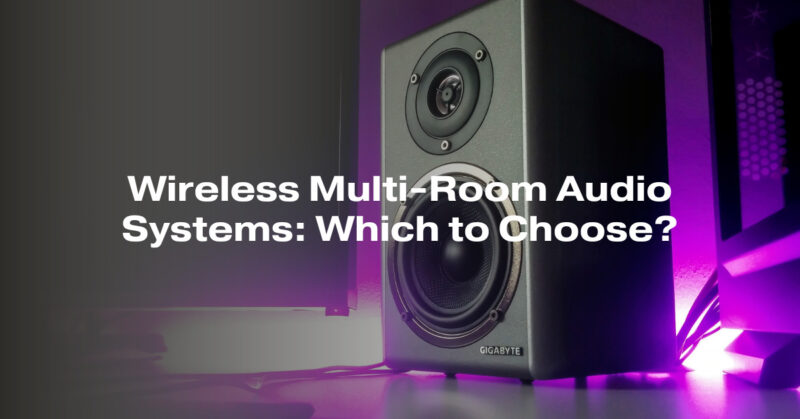Wireless multi-room audio systems have become increasingly popular, offering a convenient way to enjoy synchronized music throughout your home. Several brands offer these systems, each with its unique features and advantages. Here’s a comparison of some popular wireless multi-room audio systems to help you choose the right one for your needs:
1. Sonos:
- Key Features: Sonos is known for its easy-to-use app, extensive compatibility with streaming services, and a wide range of speakers, soundbars, and subwoofers.
- Pros:
- Seamless setup and synchronization.
- High-quality sound and versatile speaker options.
- Excellent integration with popular music streaming platforms.
- Compatibility with voice assistants like Amazon Alexa and Google Assistant.
- Cons:
- Limited support for hi-res audio formats.
- Closed ecosystem (not compatible with other brands).
2. Bose SoundTouch:
- Key Features: Bose SoundTouch offers a range of speakers, soundbars, and amplifiers with one-touch presets for easy access to your favorite music.
- Pros:
- High-quality sound and well-built speakers.
- Simple and intuitive app for control.
- Preset buttons for quick access to playlists and radio stations.
- Cons:
- Limited support for streaming services compared to some competitors.
- Fewer speaker options compared to other brands.
3. Denon HEOS:
- Key Features: Denon’s HEOS system includes speakers, soundbars, AV receivers, and amplifiers. It offers high-resolution audio support and compatibility with popular streaming services.
- Pros:
- Versatile product lineup for different audio needs.
- Support for hi-res audio formats.
- Good app control and customization options.
- Cons:
- Some users may find the app interface less intuitive than others.
- Limited voice assistant integration.
4. Bluesound:
- Key Features: Bluesound specializes in high-resolution audio and offers a range of speakers, soundbars, and streaming components.
- Pros:
- Support for high-quality audio formats, including MQA.
- Excellent sound quality.
- Integration with various streaming services.
- Cons:
- Higher price point compared to some competitors.
- Smaller product lineup.
5. Yamaha MusicCast:
- Key Features: Yamaha’s MusicCast ecosystem includes AV receivers, soundbars, speakers, and wireless adapters. It offers support for high-resolution audio and extensive customization options.
- Pros:
- Broad product range for different audio setups.
- High-quality sound and hi-res audio support.
- Robust customization options through the app.
- Cons:
- App interface could be more user-friendly.
- Integration with third-party streaming services is limited.
6. Apple AirPlay 2:
- Key Features: While not a standalone system, Apple’s AirPlay 2 allows you to connect compatible speakers and devices (including Apple HomePod) for multi-room audio streaming.
- Pros:
- Seamless integration with Apple devices.
- Supports high-quality audio formats.
- Integration with Siri for voice control.
- Cons:
- Limited compatibility with non-Apple devices.
- Fewer customization options compared to dedicated multi-room systems.
7. Google Chromecast:
- Key Features: Google Chromecast allows you to cast audio to compatible speakers and devices, including Google Nest speakers and third-party options.
- Pros:
- Integration with Google Assistant for voice control.
- Compatibility with a range of third-party speakers.
- Affordable option for multi-room audio.
- Cons:
- Limited support for high-resolution audio formats.
- Requires a separate device (phone, tablet, or computer) for control.
8. Amazon Echo and Alexa Multi-Room Music:
- Key Features: Amazon’s Echo devices and Alexa platform enable multi-room audio playback across compatible speakers.
- Pros:
- Integration with Amazon Alexa for voice control.
- Affordable and accessible options.
- Growing ecosystem of compatible devices.
- Cons:
- Limited high-resolution audio support.
- May not provide the same audio quality as some dedicated systems.
When choosing a wireless multi-room audio system, consider your existing devices, preferred streaming services, and budget. Each system has its strengths and limitations, so it’s important to find one that aligns with your specific needs and preferences. Additionally, check for ongoing software updates and future compatibility with emerging technologies to ensure a long-lasting investment.


